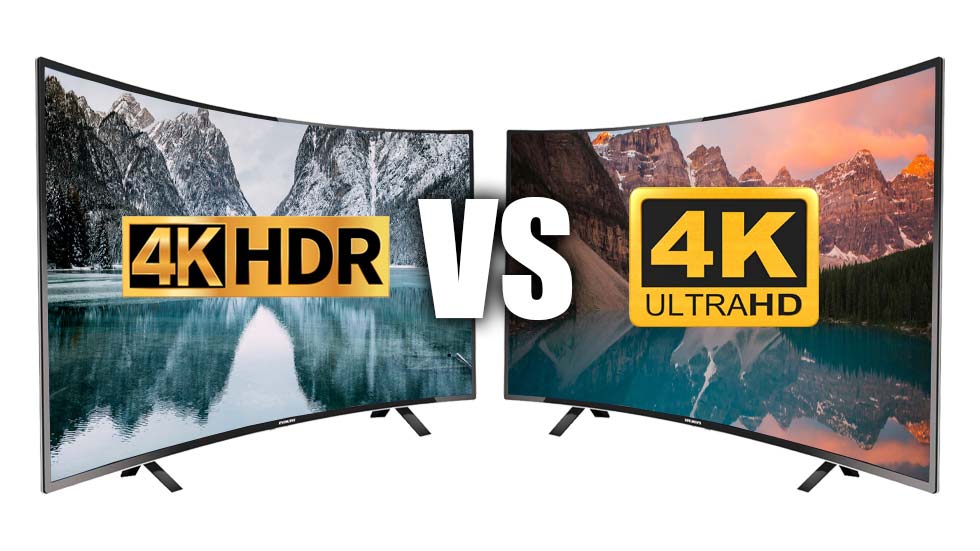
The level of visual detail on your television matters a great deal.
You want the best possible quality naturally, and with recent technological advancements that is very much a possibility.
We often hear the terms 4K and UHD mentioned when seeing commercials for brand new TVs.
But they are sometimes used interchangeably or else, people do not have a clear idea of what they really mean or what the difference is.
To make it simpler, let us start off by stating that both entail a very clear detailed picture.
The main difference between them lies in the fact that 4K is for professional productions, that is, cinema standards.
On the other hand UHD is for consumer displays, which means that it is more focused on broadcasting standards.
What is 4K?
4K technically has more pixels, precisely 8,294,400.
As a result the picture is much clearer and crisper.
You will be able to see more details than you would on a standard 720 or 1080 HD TV.
A full HD 1080p image will have a resolution of 1920 x 1080, whereas 4K would have 3840 x 2160p.
So if you do the maths, you could basically fit a pixel from a 1080p set onto just a quarter of a 4K pixel.
4K comes from the DCI, that is, the Digital Cinema Initiatives.
This is a consortium of studios for motion pictures.
The content is the current standard when it comes to digital editing and projection that is used for cinematic purposes.
It follows 2K, which operated with a resolution of 2048 x 1080, sometimes known as Full HD or 1080p.
What is UHD?
Ultra-High Definition, or UHD in short, is the natural successor of HD.
While HD screens had a resolution of 1920 x 1080, UHD quadruples it to 3840 x 2160.
Many call UHD the next-gen version of Full HD, thereby improving quality and sharpness considerably.
UHD is the consumer standard, which is the format found in televisions for home use.
In more technical terms, you may wish to note that there are two types of UHD – just to confuse matters!
There’s UHDTV1 and UHDTV2.
The former operates at a resolution of 3840 x 2160, whereas the latter has a resolution that is even higher, precisely, 7680 x 4320.
This is also referred to as QUHD, which stands for Quad Ultra High Definition.
If you were to compare, UHDTV1 is slightly less than 4K whereas the UHDTV2 is more comparable to what a screen with an 8K resolution looks like.
So, naturally UHDTV2 is far better than 4K.
It is important to explain this so as to clarify how 4K and UHD differ, because technically the difference between the two depends on the type of UHD you are referring to.
What is 4K UHD?
Television manufacturers and sellers have the tendency of using the terms 4K and UHD interchangeably.
It is important for a consumer to know the actual difference between the two so as to be able to make a well informed decision prior to buying a television.
The truth is that many manufacturers and sellers try to increase sales by adding the term UHD to 4K, thinking that some customers will be more tempted to buy a television that is said to be 4K UHD, as it comprises the benefits of both a 4K and a UHD screen.
The reality is that these companies are actually referring to UHDTV1, which is ultimately the consumer standard.
In reality 4K UHD does not really deliver the full quality that you would get from a cinematic 4K.
So if you were to compare and contrast television screens that are sold for homes, you can basically expect them to be UHDTV1 in reality, despite the fact that some are advertised as being 4K, UHD or 4K UHD.
This is because consumer devices actually use a 16:9 ratio, which is typically a UHDTV1.
Resolution & Quality
In a nutshell while 4K and UHD are the most commonly used standards for the television screens you will find on the market these days, the truth is that most are UHDTV1 , which have a slightly lower resolution than a 4K screen.
You will basically be missing out on some pixels, but this does not mean that the image is not going to be sharp and clear.
The quality is still going to be very good.
You can expect a 4K resolution from some 4K gaming monitors, but the vast majority of television screens are adopting the UHDTV1 standard as a given.
You might want to check the maximum resolution that is supported by your screen if you would like to be sure what display it really is, because in many cases sellers use the two terms interchangeably.
4K vs UHD Comparisons
The simplest way to define the main differences that exist between a 4K screen and a UHD screen is to point out that the former is a cinema or professional production standard, whereas the latter is for consumer displays.
In fact, the term 4K derived originally from DCI, which is a consortium of motion picture studios.
They basically standardised the term, since 4K refers to the horizontal pixel count, which is slightly over 4000 – 4096 to be precise!
UHD is considerably less than this, at a resolution of 3840 x 2160.
In this case the aspect ratio is of 1.78:1, whereas for a 4K it is at 1.9:1.
Key Takeaways
So, now that we have elaborated a bit on both of the terms, and explained the key differences, we may as well conclude that both are undeniably very sharp, and the quality is definitely there.
The difference between the two is almost negligible in reality.
Technically speaking UHD is basically a derivation of pure 4K.
This is why many brands seem to prefer to use 4K when advertising their TVs, apart from the fact that if one were to go into depth in terms of resolution, 4K is slightly higher, as we explained above.
Conclusion
Being aware of what 4K and UHD really mean will help you to understand what type of screen you are really buying, since there may be some conflation of the two terms, as well as some brands that simply opt to contribute to this mix-up by stating that a screen is a 4K one when it is not so in reality.



